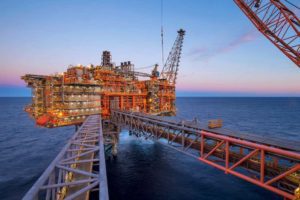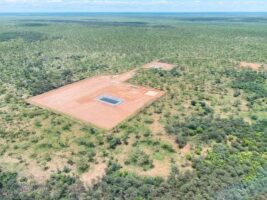Oil and gas giant Woodside revealed on Thursday it had planted 3.6 million native trees in Western Australia, a headline action in a cluster of seemingly climate friendly initiatives that also include carbon capture and storage and green hydrogen manufacture.
Woodside, which announced an eye-watering full year loss of $US4 billion on Thursday, says its climate strategy will reduce emissions by 15 per cent by 2025, 30 per cent by 2030, reaching an “aspirational” net zero by 2050. All sounds pretty good for a fossil fuel company.
But it raises the question, how can an oil and gas producer be net zero when all it produces are fossil fuels? The answer is, it probably can’t, and has no intention of doing so anyway. While the emissions targets sound nice, they are far less ambitious than they sound because they only apply to “direct” emissions and power use (scopes 1 and 2).
They leave out the absolutely key scope 3 emissions, which refers to the CO2 emissions created when customers burn Woodside’s gas and oil. Unless all of those emissions are captured and stored – an unlikely prospect with the problems it is experiencing with its current carbon capture and storage technology – Woodside cannot genuinely claim to be a net zero company.
On the plus side, the targets do seem to apply to fugitive emissions released during the extraction process, which include the natural gas itself – the highly potent greenhouse gas methane – plus the much longer-lived but less potent carbon dioxide, which is often stored in natural gas fields, especially the lower-quality ones that are now being developed in Australia, such as Woodside’s Brows gas field. But making that ambition a reality is another matter.
Woodside is hoping to use CCS technology at its Browse gas fields to capture this CO2 rather than releasing it into that atmosphere. The company had very little to say about how the CCS feasibility study for the Browse gas field was progressing at its full year results on Thursday.
Its prospects for success don’t look great. So far Chevron is the only gas producer to trial carbon capture and storage in Australia, at the Gorgon gas field. The project has been beset by difficulties. Last week news website Boiling Cold reported the CCS facility was operating at just a third of its supposed capacity, meaning emissions from the gas field will be much higher than expected.
Woodside has also said it plans “to be part of” the hydrogen boom that appears to be on the way. But as with CCS, it had almost nothing to say on Thursday about the two early-stage renewable hydrogen manufacturing projects it is looking at, one in Western Australia, and one in Tasmania.
Meanwhile, the company is continuing to develop new gas fields, most notably the Scarborough offshore gas field, 375 kilometres off the coast of Western Australia. It believes this field alone will produce 8.2 trillion cubic feet of gas.
The US Energy Information Administration estimates each cubic foot of natural gas, when burnt, emits 0.0549 kilograms of CO2. By that measure, if all the gas in the Scarborough gas field was burnt it would generate around 450 million tonnes of carbon dioxide. That’s not far off Australia’s current total annual greenhouse gas emissions, which in the 12 months to March 2020 were 528.7 Mt CO2-e.
Woodside’s tree planting and other carbon offset programs, meanwhile, have drawn 2.2 Mt CO2-e, out of the atmosphere.
But Woodside had more immediate concerns on Thursday. CEO Peter Coleman blamed the $US4 billion loss a result of “extreme turbulence in oil and gas markets”, a mix of the pandemic effect and disputes between oil producing nations.
The biggest cost was a more-than $US5 billion write-down of assets. That was a non-cash impairment, meaning the $4 billion loss is not as bad as it looks, at least in the short term. Effectively Woodside estimated the value of its gas fields were $5 billion less than it had previously thought, and it subtracted that figure from its taxable income.
Take that write-down out of the equation, and Woodside still made money, albeit considerably less than usual – its underlying net profit after tax was $US447 million, less than half last year’s figure.
“The ensuing global downturn destroyed demand for crude oil and gas at a time when there was already an overhang in the LNG market as new projects commenced production and an oversupply of oil due to a dispute between OPEC and Russia.”
Chairman Richard Goyder said: “Even in a year when a global pandemic wreaked havoc on the world economy, climate change was still the number one issue raised with me by investors. Woodside takes the risks seriously and is taking action to ensure the long-term strength of our business as the world’s energy mix shifts.”
He said gas would help the world “shift in the right direction” by “displacing higher emissions fuels and complementing renewables and will continue to play a vital role in the decades ahead”.
“Demand will be particularly strong for liquefied natural gas, which offers supply security to developing and emerging economies in the Asia Pacific region as they seek to decarbonise while meeting growing demand for energy,” he said.










